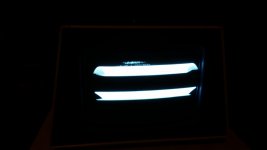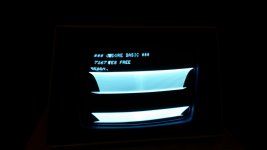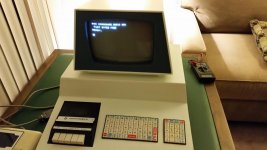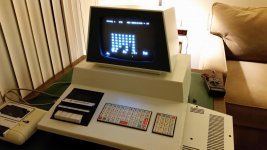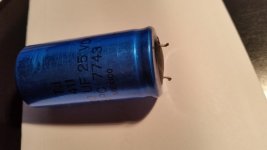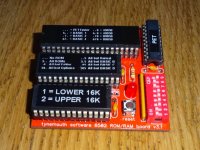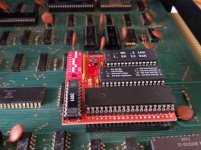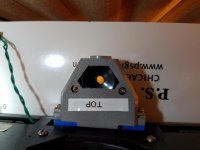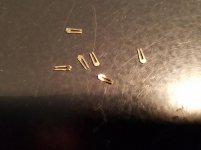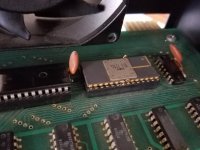Installed Reset switch, Ran ROM Diagnostic with connectors, then no boot again.
Installed Reset switch, Ran ROM Diagnostic with connectors, then no boot again.
Hi,
So I created a reset button by soldering wires to a simple red push button across the capacitor (C7) between pins 1 and 2 of the 555 Reset timer chip. Press it and you engage the reset timer achieving the same behavior as a power on reset. Tested it and it works fine.

Next I soldered up a fresh User Port connector with the schematic for the diagnostic connector mentioned in various documents needed to run a self-diagnostic which with BASIC 1 is present in ROM unlike with later versions. At first it didn't work but after looking in
The Commodore Pet Revealed I noticed a difference between it and Zimmers document
here, namely 5-11 instead of 5-E-11 so I cut the connection to "E". I had already made the keyboard connector. After a few tries I finally got this working! See
video

These diagnostic connector wire ups work for my PET 2001-8 with BASIC-1. You can buy the keyboard connector at an electronics store and the User port connectors are available on EBay and Amazon. See
here
User port connector: 2-B, 3-C, 4-D, 5-11, 6-7-8, 9-K, 10-L
Keyboard connector: 1-9-17, 2-10-18, 3-11, 4-12, 5-13, 6-14, 7-15, 8-16, connector key in position 19.
Unfortunately, right after those successes and using the machine for a few hours, it decided to hang in the middle of outputting a large program listing.
This time the display comes up blank and pulling out PIA#1 doesn't affect it nor does waiting any length of time between power cycling. The CPU is getting jammed during an interrupt (probably a BRK), and I suspect that a ROM gave up its ghost (died). I only have one adapter socket, so I could only try one of H3,H4, or H7 at a time which didn't help. I had already ordered a RAM/ROM replacement board from tynemouth which I'll use to hopefully get things working again when it gets here.
Thanks,
Jim

